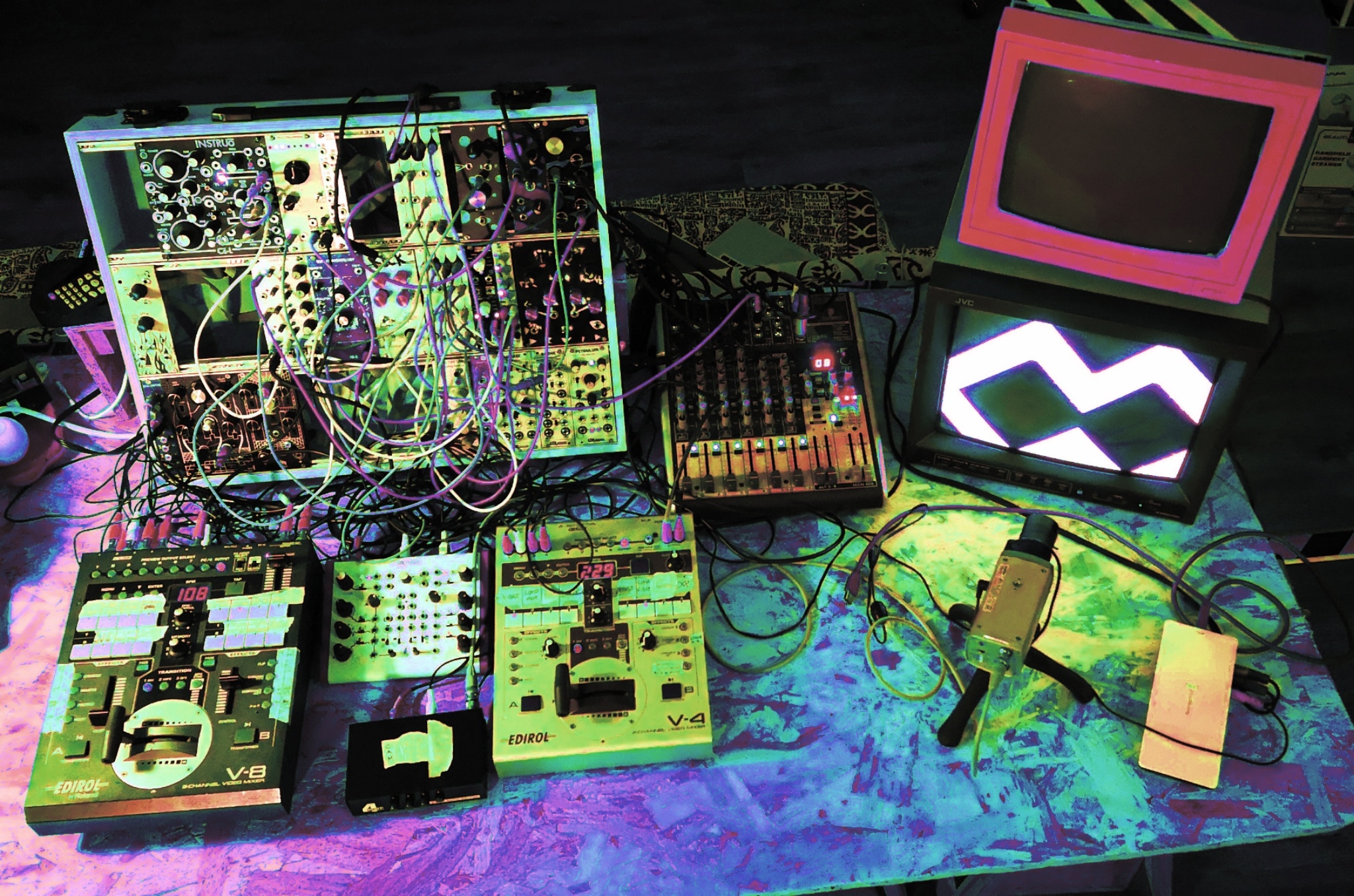︎
DELIBERATE GLITCHES is a modular audio/video synthesis system where shapes and colors displayed on an old CRT monitor serve as a generative sound source, which can then be further modulated.
The video content—whether created and manipulated through analog video synthesizers, captured by a camera, or sourced from any video feed—is composed of three RGB color channels: red, green, and blue.
These RGB channels are converted into audio signals using a custom-soldered cable that transforms the VGA video output into three separate audio streams, one for each color channel.
Through modular synthesis, I can create or alter the video content while simultaneously listening to the sounds generated by the displayed images. The audio from each color channel can then be further shaped using audio synthesizer modules, resulting in rich, unique loops for an immersive audiovisual experience.

An analog video synthesizer can produce shapes and colors inside an old cathode ray tube (CRT) monitor by means of a modulated electric current that deflects electrons inside the tube.
Electric current is also a waveform, and the frequencies needed to produce visible signals in a CRT monitor depend on the different standards used.
In general there are:
ANIMATION frequencies, which are below 25 Hz.
Y AXIS frequencies ranging from about 50 Hz to 15 KHz known as the audio range because it roughly coincides with most of the human audible range.
X AXIS frequencies ranging from about 15 KHz to 6 MHz, thus surpassing the range of the human hearing.

All the colors we perceive in nature result from light waves that are reflected or transmitted by objects, while other wavelengths are absorbed. Each object reflects light at specific wavelengths, which corresponds to the colors we see. The visible light spectrum for the human eye ranges from approximately 400 to 800 THz (which corresponds to wavelengths of about 750 nm to 380 nm).
Sound is also a waveform, but it is a mechanical wave that requires a medium to propagate, unlike light, which is an electromagnetic wave and can travel through a vacuum. The human ear perceives sound frequencies in the range of 20 Hz to 20 kHz, which is much lower than the frequencies of visible light.
Light and sound waveforms share some properties like frequency, wavelength, and amplitude,
which influence how we perceive them—pitch in sound and color in light.
I like to think of colors as inaudible frequencies, and the idea of correlating sounds with colors has always fascinated me.
More videos on my YouTube and Instagram
Sound is also a waveform, but it is a mechanical wave that requires a medium to propagate, unlike light, which is an electromagnetic wave and can travel through a vacuum. The human ear perceives sound frequencies in the range of 20 Hz to 20 kHz, which is much lower than the frequencies of visible light.
Light and sound waveforms share some properties like frequency, wavelength, and amplitude,
which influence how we perceive them—pitch in sound and color in light.
I like to think of colors as inaudible frequencies, and the idea of correlating sounds with colors has always fascinated me.
More videos on my YouTube and Instagram

WANDALUMEN
a live visuals project w/ artist Elena Perco
Main artistic collaborations: Alberto Novello (It) - Elisa Batti (Nl) - Maria Valencia (Col) - Violeta Garcia (Arg) - Clockwork Voltage (Slo) - Dj Lycox (Fr) - Maistah Aphrica (It)